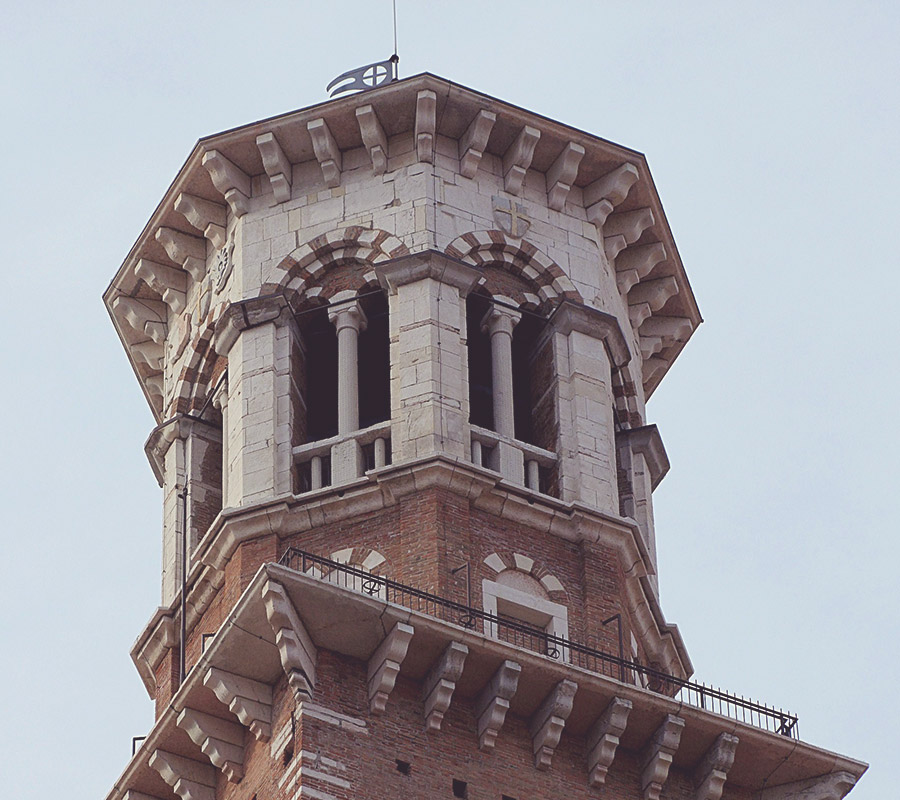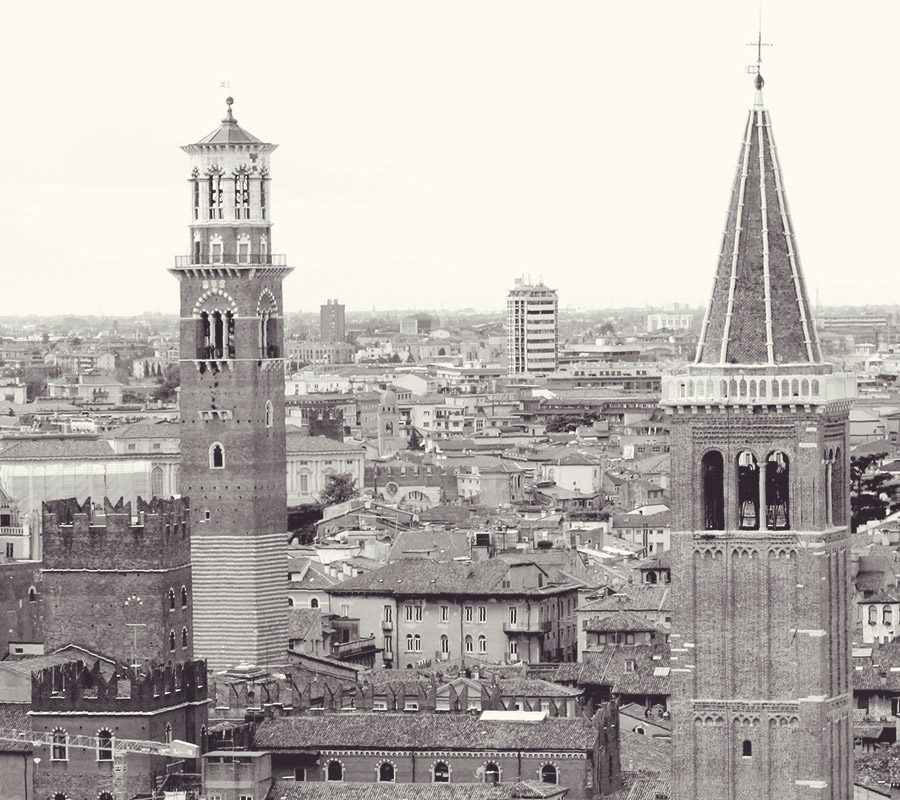
A breathtaking view from the highest building
Adjacent to Piazza Erbe, and facing Piazza dei Signori, one finds a complex of Scala family buildings. Upon entering the Piazza dei Signori from Piazza Erbe, one walks through the Arco della Costa. On the right there is the Palazzo del Comune, also known as the Palazzo della Ragione, built at the end of the 12th century, which today is a museum. Originally the palace presented four corner towers, of which there are only two standing today. Passing through the building, one discovers the well conserved courtyard called the Mercato Vecchio, where in the summer a festival for theater and music is celebrated.
The square is surrounded by a pillared portico, uphol- ding Romanesque mullion windows with three openings, the vestment is of red and white alternating horizontal strips. On the right of the square, one discovers the Scala della Ragione, a late Gothic masterpiece of the 15th century. One of the surviving towers of the Palazzo del Comune is the Torre dei Lamberti, which was built by the Lamberti family in 1172. It stands 84 meters tall, the tallest building in the city, offering a spectacular 360° view.
Since 1295, the tower has had two bells: the Marangona, which in yesteryear announced the end of the workday for artisans, and also had the function of a fire alarm, and a second bell, called the Rengo, which would convoke the town council during the “communal” period, as well as having the function to call the citizens to arms.


Continuing along the square, the next building is the Palazzo del Capitanio, also known as the Palazzo del Tribunale. This was the residence of the Scala family already in the 13th century. Its reconstruction was commissioned by Cansignorio during the second half of the 14th century, and it presents a large and solid Scala Dominion tower, as well as a handsome portal by Michele Sanmicheli, and a central courtyard of the 15th century, which is closed in and delimited by a three-part loggia with a portico.
The Palazzo del Governo, also known as the Prefettura, was commissioned at the beginning of the 14th century by Cansignorio.
Due to the fact that the Scala family were important patrons of the arts, this is a fundamental center of 14th century Verona culture, where both Dante and Giotto were received as honored guests.
The Loggia del Consiglio was built between 1476 and 1493, as the assembly seat for the town council. It presents an eight-section round-arched portico, and at the piano nobile there are four wide mullion windows. On top of the building, there are statues of illustrious figures of Verona during the Roman times (Catullus, Pliny, Marcus Emilius , Vitruvius, and Cornelius Nepos). Over the arch that connects the Loggia with the Casa della Pietà, there is a statue of Girolamo Fracastoro, who was a doctor, a poet, and an astronomer, from Verona. Closing the square, one finds the Palazzo dei Giudici, which was the seat of the “podestà” and of the “Consigli minori”. And finally, from the 15th century onwards, it was the dwellings of the Venetian judges.








